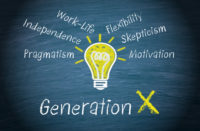Don’t Forget About Gen X: Attracting This Generation Through Benefits
When it comes to generational recruiting, most of the focus has been on Millennials. Now, with the emergence of Generation Z, the focus is shifting once again. But what about Generation X? Between Baby Boomers retiring and Gen Z entering the workforce, it seems like Gen X has been completely forgotten.






